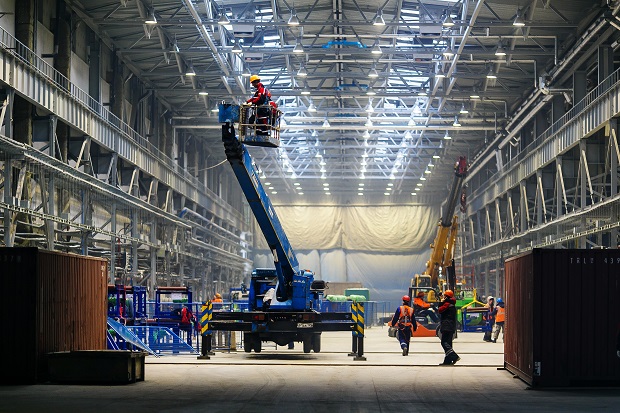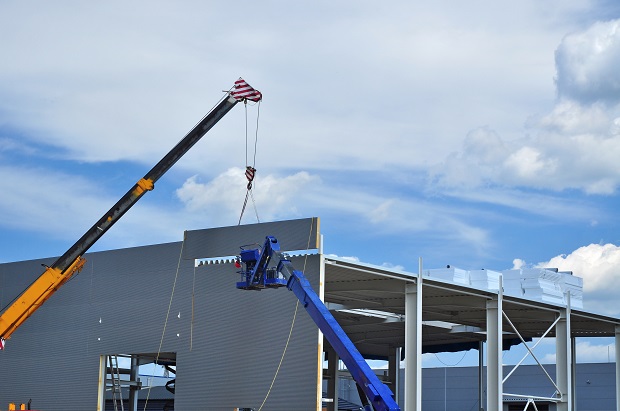A warehouse is an essential component to any wholesale or retail business that plans on scaling up and reaching more customers. After all, it allows enterprises to stock more goods and makes both packaging and delivery more manageable. Furthermore, besides being economically beneficial to the company, it also reduces shipping costs and improves customer satisfaction.
 However, you must understand that warehouses building is by no means an easy task, as there are several things you must consider, and one of the critical considerations is safety. Safety is the element that ensures your employees are safe from workplace injuries inside the warehouse.
However, you must understand that warehouses building is by no means an easy task, as there are several things you must consider, and one of the critical considerations is safety. Safety is the element that ensures your employees are safe from workplace injuries inside the warehouse.
 Although warehouse safety is often achieved through regular inspections and audits, you can optimise warehouse safety as soon as construction starts. On that note, here are five things to keep in mind to ensure warehouse safety while building the structure.
Although warehouse safety is often achieved through regular inspections and audits, you can optimise warehouse safety as soon as construction starts. On that note, here are five things to keep in mind to ensure warehouse safety while building the structure.
- Building Materials
One of the factors you must consider is the building material from which you’ll build the warehouse. Since each material differs in durability, your decision would ultimately affect the safety factor of the structure. For that reason, it’s advisable to ways keep in mind the building material for your warehouse. Here’s a closer look at your available options:
-
- Metal – Metals such as iron, aluminium, and steel are excellent choices for a warehouse’s framing or layout as these materials can withstand heavy loads and extreme weather.
-
- Fibreglass – Much like metals, fibreglass is resistant to harsh weather conditions. But most importantly, light can pass through the material. However, this may not be the best choice for warehouses, especially with products that need to be kept away from direct sunlight.
-
- Wood – Wood may not be as durable as metal, but it can be an excellent material if you want to reduce noise pollution as it is one of the very few buildings materials that are sound-proof.
-
- Plastic – Plastic will be an excellent choice if you’re looking for a lightweight material. It’s also beneficial since plastic is very easy to maintain and replace.
- Clear Lighting
The warehouse is usually an isolated area, so if there aren’t any light fixtures, or if there are only a few, your employees may find it difficult to navigate the site. Naturally, this can bring forth all sorts of accidents, such as slipping, falling from heights, or getting crushed by a heavy object.
As such, you may want to improve the visibility in the area by installing light fixtures all around the place. However, remember to do it in moderation since light fixtures tend to produce heat. With excessive lighting, you may end up increasing the likelihood of accidental fires. Although admittedly, you can just install air conditioners and improve your HVAC system to balance it out.
- Warehouse Signages
Once the construction is finished, your employees will likely find it difficult to get used to the warehouse. After all, they still aren’t aware of its ins and outs. Hence, it would be best if you could install some warehouse signages on several parts of the building.
You can start by installing signages where your employees can find emergency exits, first aid kits, and fire extinguishers. You can also install signages that provide employees with certain instructions, such as when to wear personal protective equipment (e.g., helmets, goggles, masks, gloves, etc.).
- Fire Safety
Every building is at risk of fire, and that includes warehouses. Hence, it’s best if you can prepare some countermeasures in case worse comes to worst. Fortunately, it should be possible to install countermeasures during the construction of the building. For starters, you can install smoke alarms around the warehouse. And as stated in the previous section, you should remember to include signages for fire safety as well, such as the signage fire exit and fire extinguishers.
- Forklift Pathways
If you’re planning to build a warehouse, chances are you also intend to have forklifts travel back and forth the area to move heavy items or pallets. While they are indeed crucial to warehouses, they can be a safety hazard to your employees. After all, workers may find themselves in the pathway of the forklift and end up getting hit by the vehicle.
With that said, make sure you put in place clear indications of the forklift pathways so as to discourage workers from passing through these areas, intentionally or unintentionally. You can do this by installing markings or signages.
Final Words
Business owners tend to think that warehouse safety is only achieved through regular inspections and audits, but in reality, you can start as soon as the construction begins. With this article, you should now know what to keep in mind so you can improve warehouse safety while building a customized structure. It may increase the overall cost of the project, but the payoff is most certainly worth it.




Comments are closed.